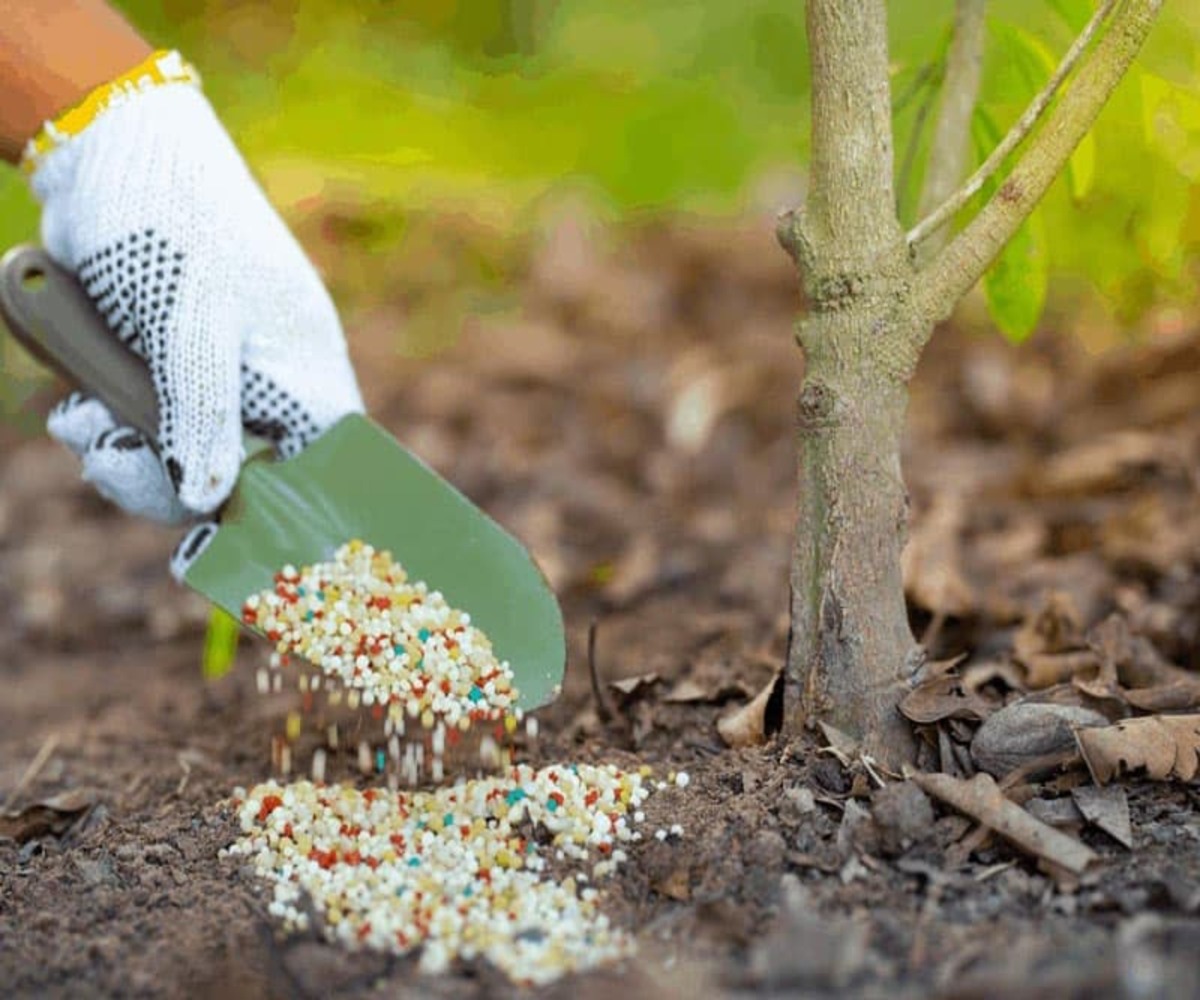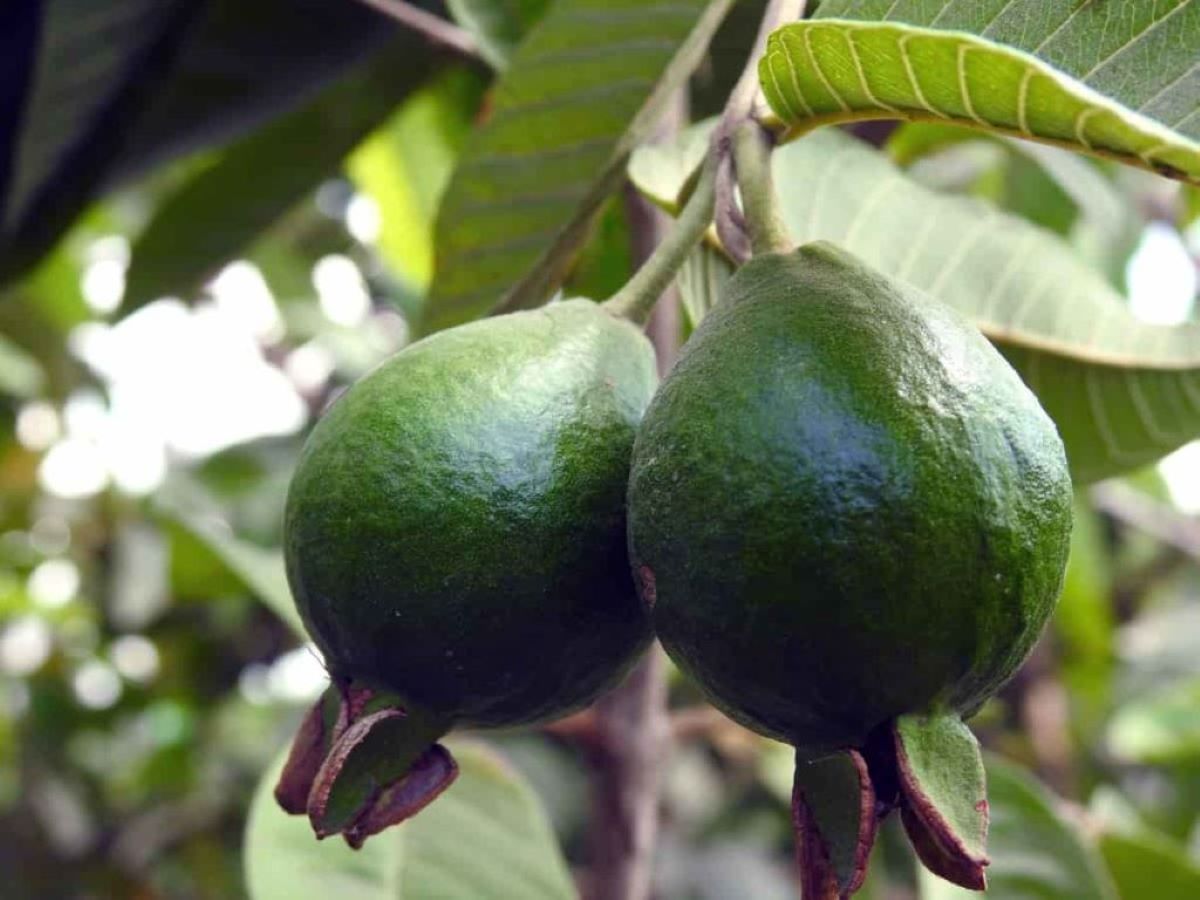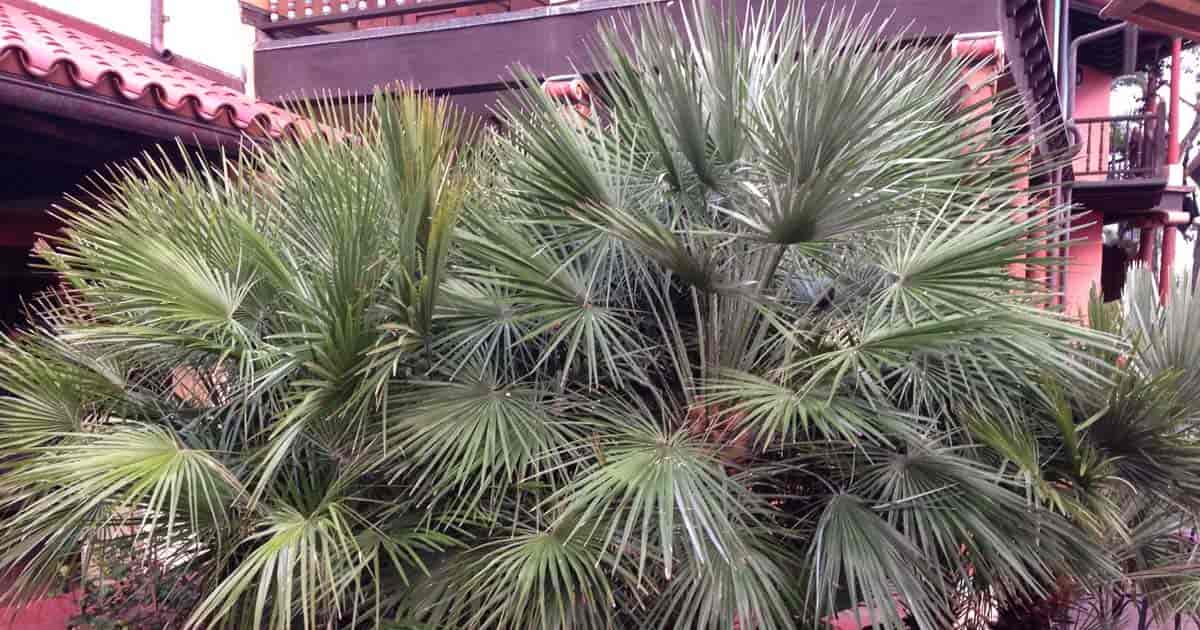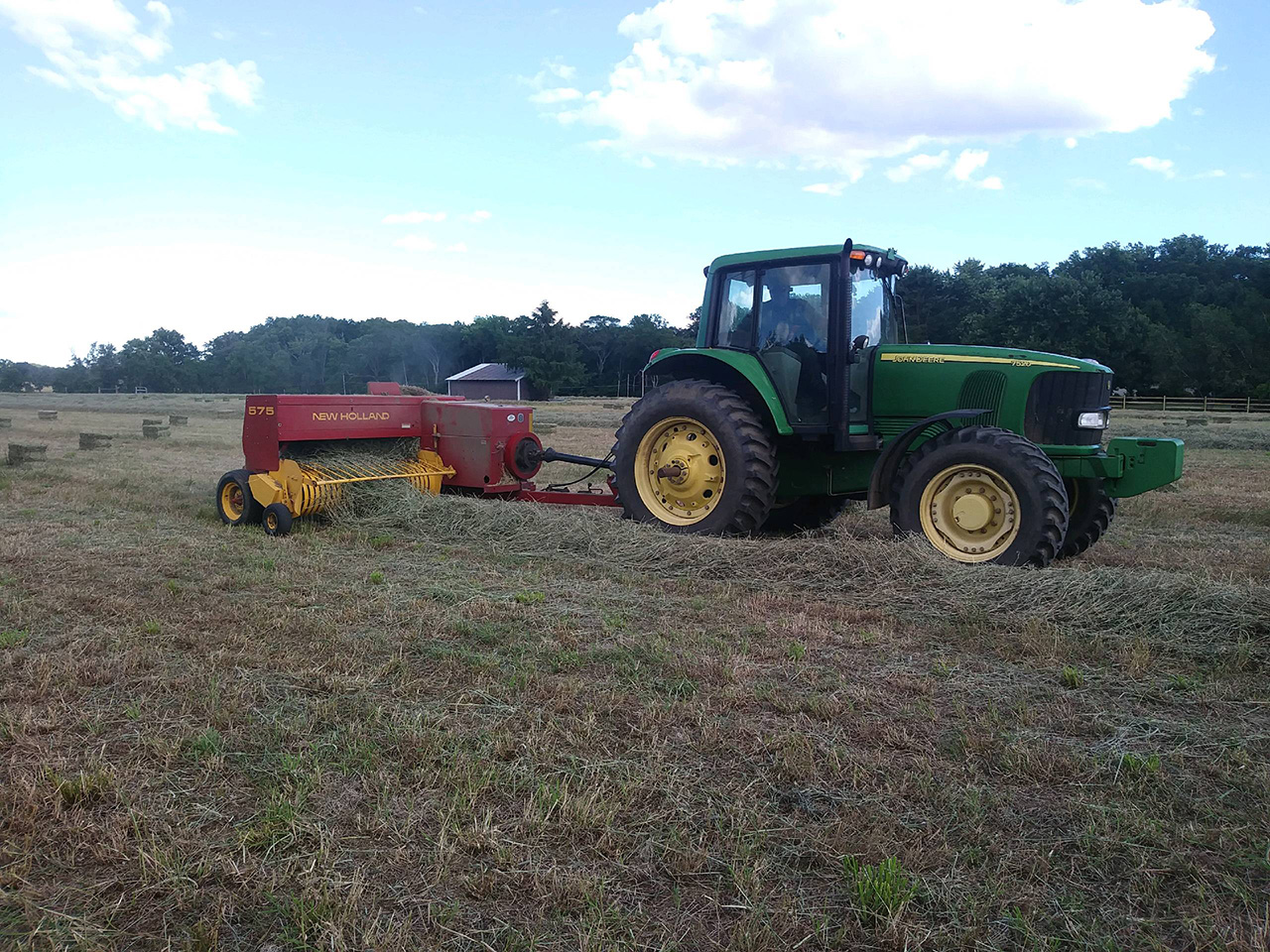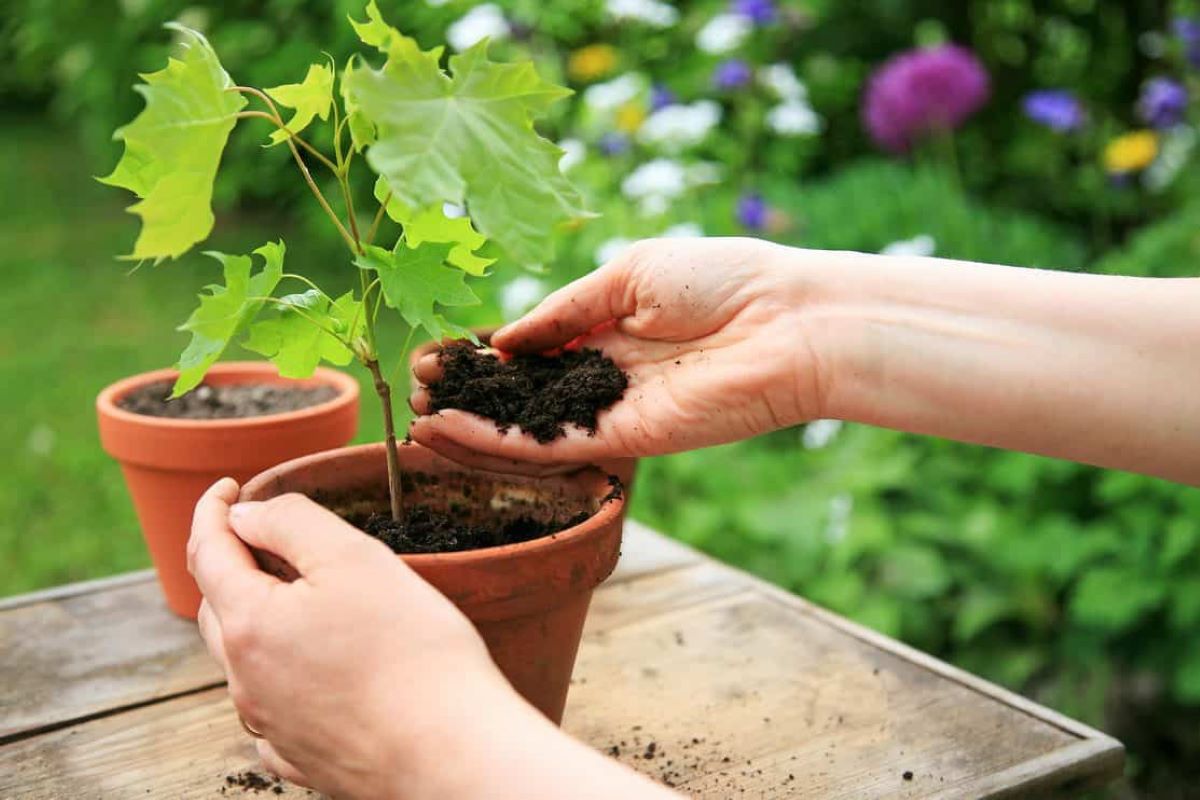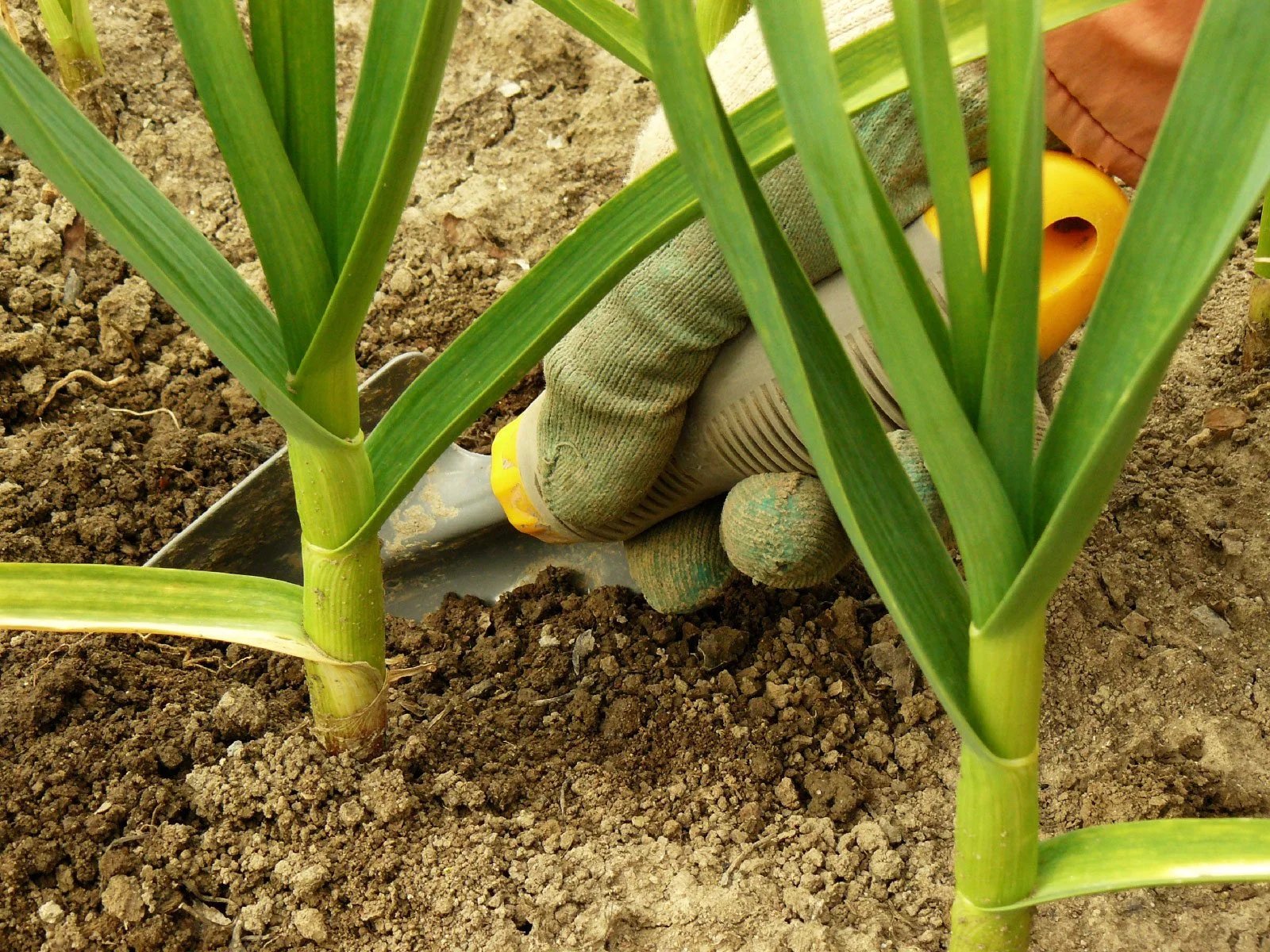Home>Types of Gardening>Ornamental Gardening>What Is The Best Fertilizer For Monstera
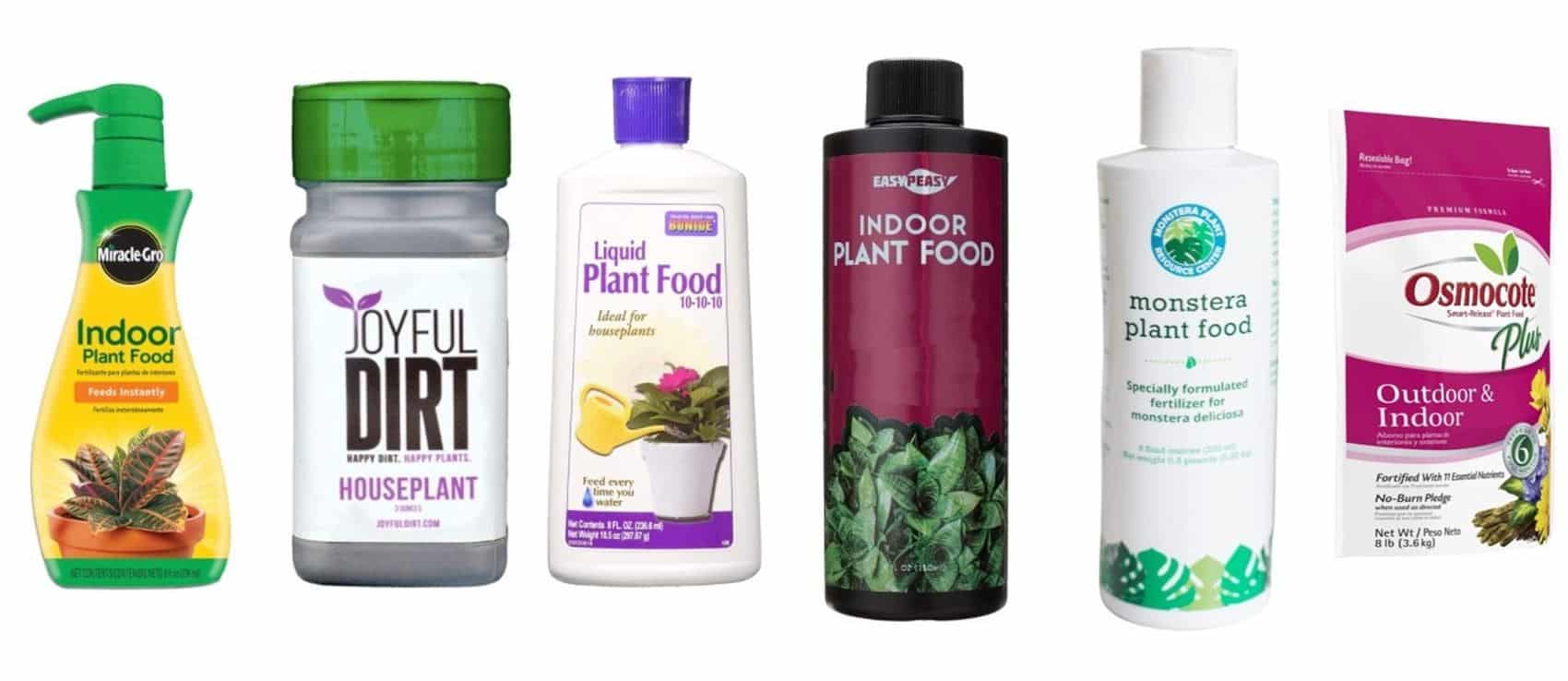

Ornamental Gardening
What Is The Best Fertilizer For Monstera
Modified: January 22, 2024
Discover the best fertilizer for Monstera plants and enhance their growth in your ornamental gardening endeavors. Find the perfect balance of nutrients to keep your Monstera thriving.
(Many of the links in this article redirect to a specific reviewed product. Your purchase of these products through affiliate links helps to generate commission for Chicagolandgardening.com, at no extra cost. Learn more)
Table of Contents
- Introduction
- Factors to Consider when Choosing Fertilizer for Monstera
- Organic Fertilizers for Monstera
- Synthetic Fertilizers for Monstera
- Slow-Release Fertilizers for Monstera
- Liquid Fertilizers for Monstera
- Fertilizer Ratio for Monstera
- How to Apply Fertilizer to Monstera
- Common Mistakes to Avoid when Fertilizing Monstera
- Conclusion
Introduction
Welcome to the wonderful world of ornamental gardening! If you’re a passionate plant lover, chances are you’ve encountered the mesmerizing beauty of the Monstera plant. With its large, glossy leaves and unique leaf patterns, the Monstera has become a popular choice for indoor and outdoor gardens alike.
Like any other plant, Monstera plants require proper care and nutrition to thrive. One essential aspect of their care routine is the use of fertilizer. Fertilizers provide the necessary nutrients that help plants grow and develop to their full potential. However, with so many options available on the market, it can be overwhelming to choose the best fertilizer for your Monstera.
This comprehensive guide will walk you through the different factors to consider when selecting the optimal fertilizer for your Monstera. Whether you prefer organic or synthetic fertilizers, slow-release or liquid options, we’ve got you covered. Not only will this article provide you with a wealth of information, but it will also help you understand the fertilizer ratios and application methods specific to Monstera plants.
So put on your gardening gloves, grab your gardening tools, and let’s dive deep into the world of Monstera fertilizers!
Factors to Consider when Choosing Fertilizer for Monstera
Choosing the right fertilizer for your Monstera plant is crucial in ensuring its health and vitality. While there are various options available, there are several factors you should consider before making a decision:
- Nutrient Content: The nutrient requirements of Monstera plants can vary depending on their growth stage. Look for a fertilizer that provides a balanced mix of macronutrients, such as nitrogen (N), phosphorus (P), and potassium (K), as well as essential micronutrients like iron, magnesium, and calcium.
- Fertilizer Type: There are two main types of fertilizers to choose from: organic and synthetic. Organic fertilizers are derived from natural sources and provide a slow-release of nutrients, while synthetic fertilizers are chemically formulated and can offer immediate results. Consider your gardening philosophy and preferences when choosing the type of fertilizer.
- Growth Stage: Different growth stages of Monstera plants require different nutrients. For example, during the vegetative growth stage, a fertilizer with a higher nitrogen content promotes leaf and stem development. In contrast, during the flowering stage, a higher phosphorus content can encourage blooming. Consider the specific needs of your Monstera plant at each growth stage.
- Soil Conditions: The condition of your soil plays a significant role in the effectiveness of your fertilizer. Conduct a soil test to determine its pH level and nutrient deficiencies. Choose a fertilizer that can address any soil deficiencies and adjust the pH level to optimize nutrient uptake.
- Application Method: Fertilizers come in various forms, including granular, liquid, and slow-release pellets. Consider the ease of application and your preferred method when selecting a fertilizer. Granular fertilizers are often spread on the soil surface, while liquid fertilizers can be applied directly to the foliage or mixed with water for irrigation.
By considering these factors, you can make an informed decision when choosing the best fertilizer for your Monstera plant. Remember, every plant is unique, and it may take some trial and error to find the perfect fertilizer that meets your plant’s specific needs. So be patient, observe your plant’s response, and adjust the fertilizer regimen accordingly.
Organic Fertilizers for Monstera
Organic fertilizers are derived from natural sources and are an excellent choice for those looking for an environmentally-friendly and sustainable approach to plant care. These fertilizers provide slow-release nutrients and improve soil health over time. Here are some popular organic fertilizers for Monstera plants:
- Compost: Compost is a nutrient-rich organic material that is produced from decomposed organic matter. It enhances soil structure, promotes microbial activity, and gradually releases nutrients to plants. Incorporating compost into the soil or using it as a top dressing around the base of the Monstera plant can provide a steady supply of nutrients.
- Manure: Well-aged animal manure, such as horse or cow manure, is another organic option for fertilizing Monstera plants. Manure enriches the soil with essential nutrients and improves its moisture-holding capacity. It is recommended to compost or age the manure before applying it to prevent the risk of burning the plant roots.
- Fish Emulsion: Fish emulsion is made from the remains of fish, providing a concentrated source of nitrogen and micronutrients. It is available in liquid form and can be diluted with water for easy application. Fish emulsion is commonly used for foliar feeding, promoting lush foliage growth in Monstera plants.
- Bone Meal: Bone meal is a slow-release organic fertilizer rich in phosphorus and calcium. It helps strengthen the Monstera plant’s root system, supports flower and fruit development, and improves overall plant health. Bone meal can be incorporated into the soil during planting or added as a top dressing.
- Seaweed Extract: Seaweed extract is derived from seaweed and is a natural source of trace minerals, plant hormones, and vitamins. It stimulates root growth, enhances nutrient uptake, and improves the Monstera plant’s resistance to environmental stress. Seaweed extract can be applied as a foliar spray or mixed with water for soil drenching.
When using organic fertilizers, it’s important to follow the recommended application rates and frequency. Unlike synthetic fertilizers, organic options release nutrients slowly, so over-fertilization is less of a concern. Regularly monitor your Monstera plant’s growth and adjust the fertilizer regimen accordingly to maintain optimal health.
Synthetic Fertilizers for Monstera
Synthetic fertilizers, also known as chemical fertilizers, are manufactured using mineral salts or synthesized nutrients. They provide a quick release of nutrients, making them a popular choice for gardeners looking for immediate results. Here are some commonly used synthetic fertilizers for Monstera plants:
- Nitrogen-Based Fertilizers: Nitrogen is essential for promoting vigorous leafy growth in Monstera plants. Fertilizers with a higher nitrogen content, such as urea or ammonium nitrate, can encourage lush foliage and help the plant develop strong stems.
- Phosphorus-Based Fertilizers: Phosphorus is necessary for root development, flowering, and fruit production. Fertilizers with a higher phosphorus content, such as monopotassium phosphate, can stimulate blooming and enhance the overall health of the Monstera plant.
- Potassium-Based Fertilizers: Potassium helps with overall plant health and stress resistance. Fertilizers with a higher potassium content, such as potassium sulfate, can improve the Monstera plant’s ability to tolerate environmental fluctuations and promote disease resistance.
- Complete Fertilizers: Complete fertilizers, also known as balanced fertilizers, contain a mix of nitrogen, phosphorus, and potassium in a balanced ratio. These fertilizers ensure the Monstera plant receives all essential nutrients necessary for overall growth and development.
- Controlled-Release Fertilizers: Controlled-release fertilizers are synthetic fertilizers that provide a slow and steady release of nutrients over an extended period. These fertilizers come in the form of coated prills or granules and can reduce the frequency of application. They are especially beneficial for gardeners looking for long-term fertilization solutions.
When using synthetic fertilizers, it’s important to carefully follow the manufacturer’s instructions regarding application rates and timing. Overuse of synthetic fertilizers can lead to nutrient imbalances, root burn, and environmental pollution. It’s advisable to regularly monitor your Monstera plant’s response to fertilizer and adjust the regimen as needed to strike a balance between growth and plant health.
Slow-Release Fertilizers for Monstera
Slow-release fertilizers are designed to provide a controlled and steady release of nutrients over an extended period. These fertilizers offer convenience and reduce the need for frequent applications. Here are some options for slow-release fertilizers that are suitable for Monstera plants:
- Granular Pellets: Granular slow-release fertilizers come in small pellets that are spread on the soil surface. These pellets are coated with a special material that controls the release of nutrients. As water reaches the pellets, the coating breaks down, releasing nutrients gradually to the Monstera plant. This type of fertilizer provides a continuous supply of nutrients for several months.
- Osmocote: Osmocote is a popular slow-release fertilizer that comes in the form of coated granules. The outer coating of Osmocote dissolves gradually, releasing nutrients in response to temperature and moisture. It provides a balanced release of macronutrients and is suitable for Monstera plants throughout their growth stages.
- Controlled-Release Spikes: Controlled-release spikes are long rods or stakes that are inserted into the soil near the Monstera plant’s root zone. These spikes slowly release nutrients as they dissolve in soil moisture, providing a continuous supply of nutrients over time. They are convenient and ensure an even distribution of nutrients in the root zone.
- Slow-Release Liquids: Slow-release liquid fertilizers are mixed with water and applied directly to the soil around the Monstera plant. These fertilizers contain special formulas that release nutrients slowly over several weeks. They are easy to use and provide a convenient way of supplying nutrients to the Monstera plant.
Slow-release fertilizers are ideal for gardeners who prefer a low-maintenance approach to fertilizing their Monstera plants. They provide a consistent supply of nutrients, reducing the risk of over-fertilization and minimizing nutrient wastage. However, it’s important to note that the slow-release rate can vary depending on factors such as temperature and soil moisture levels.
When using slow-release fertilizers, it’s still crucial to monitor your Monstera plant’s growth and health. Adjust the fertilizer application if necessary, and always follow the manufacturer’s instructions regarding application rates and frequency. With proper use, slow-release fertilizers can contribute to the overall health and vitality of your Monstera plant.
Liquid Fertilizers for Monstera
Liquid fertilizers are a popular choice for both indoor and outdoor gardeners due to their quick absorption and ease of use. They provide an immediate boost of nutrients to the Monstera plants. Here are some options for liquid fertilizers that work well for Monstera:
- All-Purpose Liquid Fertilizers: All-purpose liquid fertilizers contain a balanced ratio of nitrogen, phosphorus, and potassium, along with essential micronutrients. They are versatile and suitable for various stages of Monstera plant growth. These fertilizers can be diluted with water and applied to the soil or used as a foliar spray.
- Fish Emulsion: Fish emulsion, a liquid fertilizer made from decomposed fish, is an organic option for fertilizing Monstera plants. It is rich in nitrogen and other beneficial nutrients. Fish emulsion can be diluted with water and applied to the soil or used as a foliar spray, promoting healthy foliage growth in Monstera plants.
- Seaweed Extract: Seaweed extract is a liquid fertilizer derived from seaweed. It contains various essential plant nutrients, trace minerals, and growth-promoting hormones. Seaweed extract enhances nutrient uptake, improves plant resistance to stress, and stimulates root and shoot growth in Monstera plants. It can be applied as a foliar spray or mixed with water for soil drenching.
- Bloom Boosters: Bloom booster liquid fertilizers have a higher phosphorus content, which stimulates flowering in Monstera plants. These fertilizers provide the necessary nutrients for beautiful blooms and can be applied during the flowering stage of the plant’s growth. They can be used in conjunction with a balanced all-purpose liquid fertilizer for optimal results.
- Foliar Fertilizers: Foliar fertilizers are liquid fertilizers specifically designed for application to the foliage of plants. They are absorbed through the leaves and provide a quick nutrient boost. Foliar fertilizers can be useful for Monstera plants with nutrient deficiencies or those recovering from stress. However, it’s important to follow the instructions regarding application rates to avoid leaf burn.
When using liquid fertilizers, it’s important to dilute them according to the manufacturer’s instructions. Over-fertilization can lead to nutrient imbalances and may harm the Monstera plant. Follow a regular feeding schedule, usually every two to four weeks during the growing season, and adjust the frequency based on the plant’s response and growth rate.
Monitor your Monstera plant closely, observing for any signs of nutrient deficiency or excess. Adjust the fertilizer application as needed to maintain a healthy and thriving plant. Liquid fertilizers provide a convenient and efficient way to nourish your Monstera plant, ensuring it receives the necessary nutrients for optimal growth.
Fertilizer Ratio for Monstera
The fertilizer ratio refers to the proportion of major nutrients, such as nitrogen (N), phosphorus (P), and potassium (K), in a fertilizer. The ideal fertilizer ratio for Monstera plants depends on their growth stage and specific nutritional needs. Here are some general guidelines for the fertilizer ratio when fertilizing Monstera:
- Vegetative Growth: During the vegetative growth stage, when Monstera plants are actively producing leaves and stems, a higher nitrogen (N) ratio is recommended. Nitrogen promotes lush foliage development and helps the plant establish a strong structure. A fertilizer with a ratio such as 3:1:2 (N:P:K) or 6:2:4 is suitable for this stage.
- Flowering and Fruiting: As Monstera plants transition to the flowering and fruiting stage, they require more phosphorus (P) for the development of blooms and fruits. A higher phosphorus ratio can stimulate flowering and enhance fruit production. A fertilizer with a ratio such as 2:1:2 or 4:2:4 can be used during this stage.
- Balanced Nutrition: Monstera plants also benefit from a balanced fertilizer ratio that provides a consistent supply of all essential nutrients. A balanced ratio, such as 1:1:1 or 10:10:10, ensures that the plant receives a well-rounded nutrition profile. This ratio can be used during the general maintenance and growth of Monstera plants.
It’s important to note that these ratios serve as general guidelines, and the specific needs of your Monstera plant may vary. Factors such as soil conditions, light exposure, and temperature can also influence the fertilizer requirements. Regularly monitor your plant’s growth and adjust the fertilizer application as needed.
When selecting a fertilizer, check the label for the nutrient ratio information. Some fertilizers may also include micronutrients such as iron, magnesium, and calcium, which are also important for Monstera plant health. Understanding and maintaining the appropriate fertilizer ratio can promote healthy growth, vibrant foliage, and optimal flowering and fruiting in your Monstera plants.
How to Apply Fertilizer to Monstera
Applying fertilizer correctly is essential to ensure your Monstera plants receive the necessary nutrients for healthy growth. Here are some steps to follow when applying fertilizer to your Monstera:
- Read the Instructions: Start by reading the instructions provided on the fertilizer packaging. Pay attention to the recommended application rates, frequency, and any specific instructions for Monstera plants.
- Water the Plant: Before applying fertilizer, water your Monstera plant thoroughly. Moist soil allows the fertilizer to penetrate effectively and reduces the risk of root burn.
- Choose the Application Method: Decide on the application method that suits your preference and the type of fertilizer you’re using. Common application methods include spreading granular fertilizers on the soil surface, mixing liquid fertilizers with water for watering, or applying slow-release pellets in the soil.
- Distribute Evenly: If using granular or slow-release fertilizers, evenly distribute the fertilizer around the base of the Monstera plant. Avoid directly applying the fertilizer on the foliage or stem.
- Water Again: After applying the fertilizer, give your Monstera plant a thorough watering. This helps the fertilizer nutrients reach the root zone and prevents potential fertilizer burn on the foliage.
- Monitor and Adjust: Monitor your Monstera plant’s response to the fertilizer. Watch for any signs of over-fertilization, such as burned or yellowing leaves. Adjust the fertilizer application rate or frequency accordingly.
It’s important to remember that less is often more when it comes to fertilizing Monstera plants. Over-fertilization can lead to nutrient imbalances or toxicity, which can harm the plant. Always follow the recommended application rates and frequency provided by the fertilizer manufacturer.
Additionally, consider the seasonal needs of your Monstera plant. During the active growing season, you may fertilize more frequently, while reducing or pausing fertilization during the plant’s dormant period.
By following these steps and closely monitoring your Monstera plant’s growth, you can provide the right amount of nutrients at the right time, ensuring its optimal health and vitality.
Common Mistakes to Avoid when Fertilizing Monstera
Fertilizing your Monstera plants is a critical part of their care routine, but it’s important to avoid common mistakes that can potentially harm the plant. Here are some common mistakes to avoid when fertilizing your Monstera:
- Over-fertilization: One of the most common mistakes is over-fertilizing the Monstera plant. Using more fertilizer than recommended can lead to nutrient imbalances and the risk of burning the plant’s roots. Follow the recommended dosage and frequency provided by the specific fertilizer brand.
- Under-fertilization: On the other hand, under-fertilizing can deprive your Monstera plant of essential nutrients. Monitor the plant’s growth and health to determine if it needs additional fertilization. Adjust the frequency or dosage accordingly.
- Applying Fertilizer to Dry Soil: Avoid applying fertilizer to dry soil. Water your Monstera plant before fertilizing to ensure the nutrients are readily absorbed into the root zone. Moist soil also reduces the risk of fertilizer burn on the plant’s foliage.
- Not Following the Fertilizer Ratio: Different growth stages of Monstera plants require varying nutrient ratios. It’s important to use a fertilizer with the appropriate ratio for the specific growth stage. Forgetting to adjust the ratio can result in inadequate nutrition and hinder the plant’s growth and development.
- Using Incorrect Application Methods: Be sure to choose the appropriate application method for the fertilizer you’re using. Granular fertilizers should be spread evenly around the plant’s base, while liquid fertilizers may require dilution with water before application. Using the wrong application method may lead to inefficient nutrient uptake or potential damage to the plant.
- Not Observing Plant Response: It’s crucial to observe your Monstera plant’s response to the fertilizer. Monitor for any signs of nutrient deficiencies or excesses, such as yellowing leaves, stunted growth, or leaf burn. Adjust the fertilizer regimen if necessary to ensure the plant remains healthy and thriving.
- Ignoring Soil Conditions: The condition of the soil directly affects nutrient uptake and availability. Conduct a soil test to assess the soil’s pH level and nutrient deficiencies. Select a fertilizer that addresses the specific soil needs of your Monstera plant to optimize its growth and health.
By avoiding these common mistakes, you can effectively fertilize your Monstera plants, providing them with the necessary nutrients they need for vibrant growth and overall health.
Conclusion
Fertilizing your Monstera plants is a crucial aspect of their care routine, ensuring they receive the necessary nutrients for healthy growth and vibrant foliage. By considering factors such as nutrient content, fertilizer type, growth stage, soil conditions, and application methods, you can make an informed choice when selecting the ideal fertilizer for your Monstera plants.
Organic fertilizers, such as compost, manure, fish emulsion, bone meal, and seaweed extract, offer a sustainable and slow-release option that improves soil health over time. Synthetic fertilizers provide immediate results and are available in nitrogen-based, phosphorus-based, and potassium-based formulations.
Slow-release fertilizers gradually release nutrients over time, reducing the frequency of application and offering convenience for low-maintenance plant care. Liquid fertilizers, including all-purpose, fish emulsion, seaweed extract, and bloom boosters, provide quick absorption and are suitable for both indoor and outdoor Monstera plants.
When applying fertilizer, remember to follow instructions, water the plant beforehand, distribute the fertilizer evenly, water again after application, and observe the plant’s response. Avoid common mistakes such as over-fertilization, under-fertilization, incorrect application methods, neglecting soil conditions, and not adjusting the fertilizer ratio based on the growth stage of your Monstera plants.
By following these guidelines and being attentive to your Monstera plant’s needs, you can provide it with the right amount of nutrients at the right time, promoting healthy growth, lush foliage, and potentially stunning blooms. Enjoy the journey of nurturing your Monstera plants and witnessing their beauty thrive in your ornamental garden.

